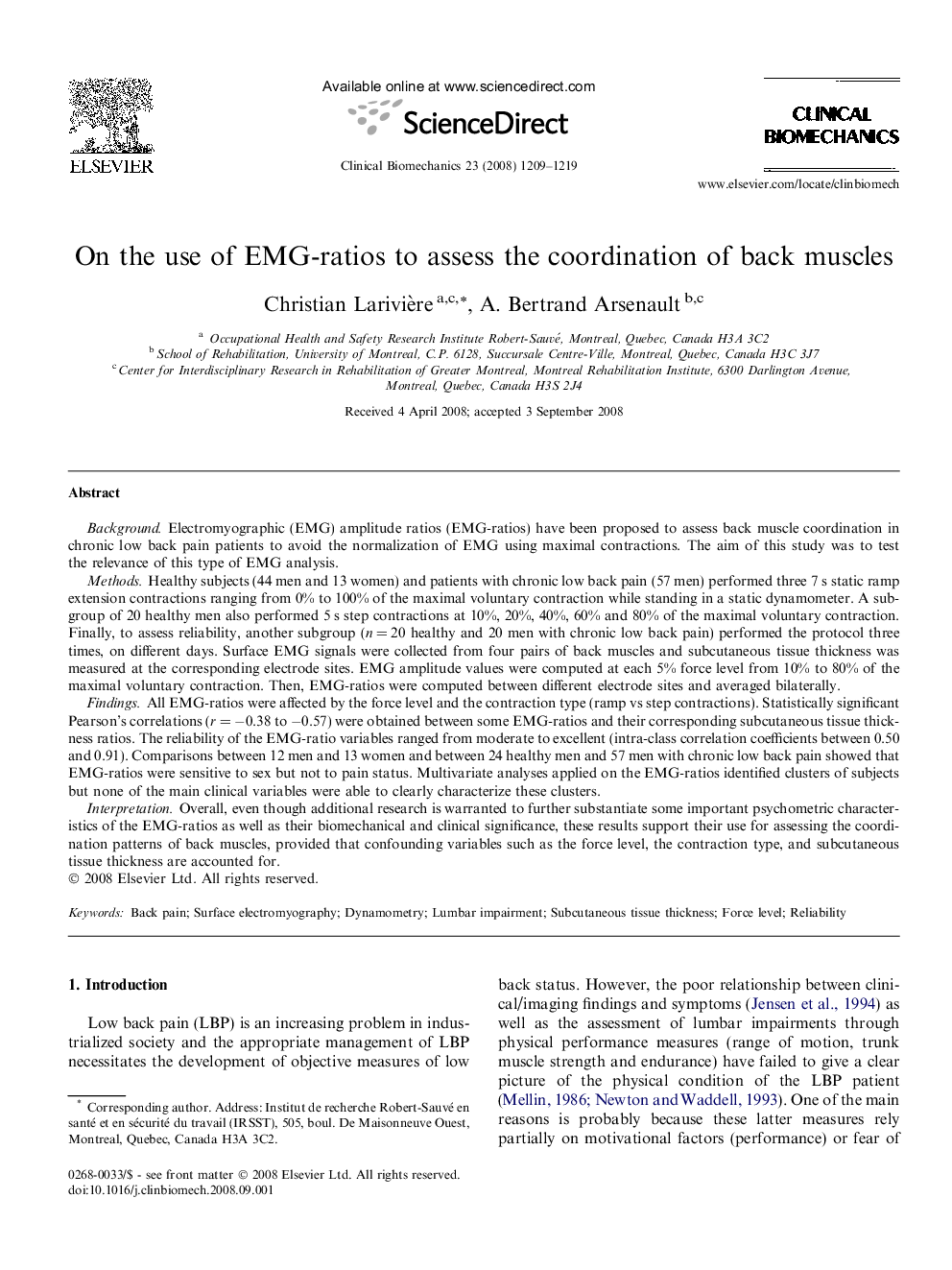| Article ID | Journal | Published Year | Pages | File Type |
|---|---|---|---|---|
| 4050958 | Clinical Biomechanics | 2008 | 11 Pages |
BackgroundElectromyographic (EMG) amplitude ratios (EMG-ratios) have been proposed to assess back muscle coordination in chronic low back pain patients to avoid the normalization of EMG using maximal contractions. The aim of this study was to test the relevance of this type of EMG analysis.MethodsHealthy subjects (44 men and 13 women) and patients with chronic low back pain (57 men) performed three 7 s static ramp extension contractions ranging from 0% to 100% of the maximal voluntary contraction while standing in a static dynamometer. A subgroup of 20 healthy men also performed 5 s step contractions at 10%, 20%, 40%, 60% and 80% of the maximal voluntary contraction. Finally, to assess reliability, another subgroup (n = 20 healthy and 20 men with chronic low back pain) performed the protocol three times, on different days. Surface EMG signals were collected from four pairs of back muscles and subcutaneous tissue thickness was measured at the corresponding electrode sites. EMG amplitude values were computed at each 5% force level from 10% to 80% of the maximal voluntary contraction. Then, EMG-ratios were computed between different electrode sites and averaged bilaterally.FindingsAll EMG-ratios were affected by the force level and the contraction type (ramp vs step contractions). Statistically significant Pearson’s correlations (r = −0.38 to −0.57) were obtained between some EMG-ratios and their corresponding subcutaneous tissue thickness ratios. The reliability of the EMG-ratio variables ranged from moderate to excellent (intra-class correlation coefficients between 0.50 and 0.91). Comparisons between 12 men and 13 women and between 24 healthy men and 57 men with chronic low back pain showed that EMG-ratios were sensitive to sex but not to pain status. Multivariate analyses applied on the EMG-ratios identified clusters of subjects but none of the main clinical variables were able to clearly characterize these clusters.InterpretationOverall, even though additional research is warranted to further substantiate some important psychometric characteristics of the EMG-ratios as well as their biomechanical and clinical significance, these results support their use for assessing the coordination patterns of back muscles, provided that confounding variables such as the force level, the contraction type, and subcutaneous tissue thickness are accounted for.
